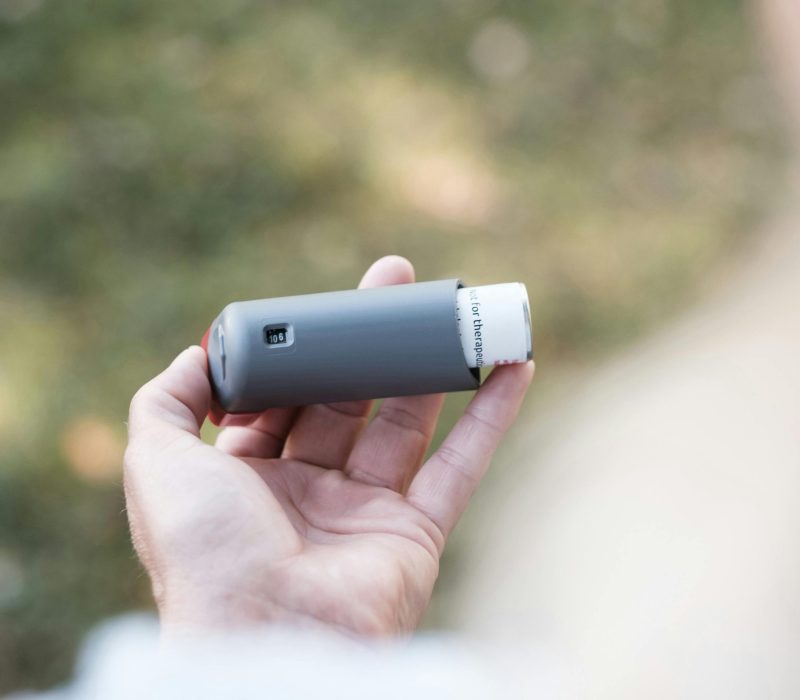Pulmonology
Seamless Respiratory Support, When It Matters Most

Pharmaconic partners with pulmonologists to deliver fast, reliable access to nebulizers, respiratory supplies, and medication solutions for patients with asthma, COPD, and cystic fibrosis. We handle the paperwork, insurance coordination, and Medicare B billing—removing delays and simplifying fulfillment. Our streamlined process allows providers to stay focused on patient care while ensuring every patient receives the respiratory support they need, without stress or setbacks.
- COPD
- Asthma
- Secure delivery

Pulmonology
Cystic Fibrosis
Cystic fibrosis is a genetic disorder that primarily affects the lungs and digestive system. It is caused by mutations in the CFTR gene, which leads to the production of thick, sticky mucus that can clog airways and trap bacteria, resulting in frequent lung infections. Symptoms vary and can include cough, repeated lung infections, inability to gain weight and fatty stools. Cystic fibrosis is a lifelong condition, but treatments have improved significantly, helping people live longer and healthier lives.
Treatments
Airway Clearance Techniques
- Chest physiotherapy (manual or mechanical) to loosen mucus
- High-frequency chest wall oscillation (vest therapy)
- Postural drainage and percussion
Medications
- Mucus-thinning drugs (dornase alfa / Pulmozyme)
- Bronchodilators to open airways (Albuterol)
- Inhaled antibiotics (Tobramycin) to treat lung infections
- Sodium Chloride (Hypertonic saline) – Helps loosen and clear mucus from the lungs
- Oral or IV antibiotics for severe infections
- Anti-inflammatory medications (Ibuprofen, Azithromycin)
- CFTR modulators (Trikafta, Kalydeco, Symdeko) – Target the underlying cause in people with specific CFTR mutations
Nutritional Support
- Pancreatic enzyme supplements to help digest food (Creon)
- High-calorie diet with added salt
- Vitamin supplements – specifically fat-soluble ones (A, D, E, K)
Pulmonary Rehabilitation
- Customized exercise and education programs to improve lung function and stamina
Pulmonology
COPD
Chronic obstructive pulmonary disease (COPD) is a progressive lung disease that makes it hard to breathe. It includes conditions like emphysema and chronic bronchitis, which damage the lungs and restrict airflow. The main cause of COPD is long-term exposure to irritants such as cigarette smoke, air pollution, or chemical fumes. Symptoms often include shortness of breath, coughing, wheezing, and excessive mucus production.
Treatments
Bronchodilators (inhaled)
- Short-acting (Albuterol, Levalbuterol, Ipratropium) – for rescue
- Long-acting (Formoterol, Arformoterol, Salmeterol, Tiotropium, Umeclidinium) – for maintenance
Steroids
- Inhaled corticosteroids (fluticasone, budesonide) – to reduce airway inflammation
- Oral corticosteroids – for short-term use during exacerbations
- Combination inhalers (bronchodilator + steroid)
Mucolytics
- Guaifenesin – oral
- Acetylcysteine 10% / 20% – inhaled via nebulizer
Oxygen Therapy
- For people with low blood oxygen levels, either long-term or during exertion/sleep
Pulmonary Rehabilitation
- Structured programs involving exercise training, nutrition counseling, education, and breathing strategies
Lifestyle Changes
- Smoking cessation – the most crucial step in slowing disease progression
- Avoiding lung irritants (pollution, fumes, allergens)
- Regular physical activity to maintain lung and muscle strength
- Healthy diet to support overall health
Treatments
Quick-relief (rescue) inhalers
- Short-acting beta agonists (SABAs) – albuterol (Ventolin, ProAir)
- Used during asthma attacks or before exercise to relieve symptoms quickly
Long-term control (maintenance) inhalers
- Inhaled corticosteroids – Fluticasone, budesonide
- Long-acting beta agonists (LABAs) – Salmeterol, formoterol, arformoterol (used with steroids)
- Combination inhalers – Advair, Symbicort, Breo, Airsupra
Oral Medications
- Leukotriene receptor antagonists – montelukast (Singulair)
- Theophylline – bronchodilator
Inhalation Devices and Therapy
Aerobika OPEP Device
- Purpose: Helps clear mucus using Oscillating Positive Expiratory Pressure (OPEP).
- Use: Aids patients with mucus buildup by creating vibrations that make it easier to cough up mucus.
Spacer
- Purpose: Attaches to inhalers to deliver medication more effectively.
- Use: Helps inhale medicine slowly and reduces irritation—useful for children or those with difficulty using inhalers.
Nebulizer
- Purpose: Converts medication into a mist for easier inhalation.
- Use: Ideal for those who can't use inhalers well; works with a mask or mouthpiece and doesn’t require deep breaths.
Incentive Spirometer
An incentive spirometer helps restore lung function after surgery or during breathing problems.
Used for:
- Post-surgery recovery
- Conditions like pneumonia or COPD
- Pulmonary rehab
Biologic Therapies (for severe asthma)
- Injectable medications targeting specific immune responses:
- omalizumab (Xolair), mepolizumab (Nucala), dupilumab (Dupixent)